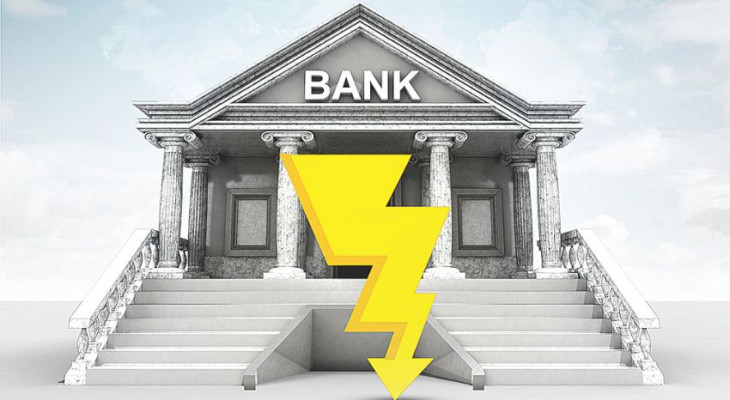Sharekan’s detailed preview report for Q2 FY2025 says that the Indian banking sector will continue to grow in 2025 as slow loan growth, lower net interest margin (NIM) and higher deposit costs weigh on profitability. Profit growth is expected to slow in the second quarter of the fiscal year.
The report predicts that banks’ overall earnings will grow modestly by around 10% year-on-year, mainly due to lower net interest income (NII) and lower profit margins. Sharekan’s insights for Q1 FY25 highlight early signs of this trend, with banks already struggling with similar pressures, and this scenario is expected to extend into Q2 FY25.
Increase in loans and deposits
Loan growth slowed to around 14% in Q2FY25 compared to strong growth in the previous quarter. Deposit growth rates ranged from 11% to 13%, indicating that the gap between credit expansion and deposit mobilization is narrowing. This move forced banks to prioritize deposits in order to maintain liquidity ratios, which in turn limited their ability to make loans. The trend of slower loan growth was first observed in Q1 FY25, with system-wide growth declining in the previous quarter.
Net interest margin (NIM) under pressure
Both Q1FY25 and Q2FY25 saw NIM compression across the banking sector. Sharekhan’s Q1 FY25 report showed a sequential decline in NIM of 3-5 basis points (bps) for private banks and a significant decline of 5-10 bps for public sector banks (PSBs). This trend is expected to continue into Q2 FY25, with higher deposit costs and lower CASA ratios potentially leading to a further 5-10 bps decline in NIM. PSBs in particular are more vulnerable to rising deposit costs as they are highly dependent on term deposits.
Slowdown in NII growth
For Q1 FY25, Sharekhan reported that net interest income (NII) growth for most banks slowed to just 8% year-on-year. This is primarily due to rising costs of funds and the need to reprice deposits at higher interest rates. In our Q2 FY25 preview, NII growth remains subdued and we expect this trend to continue. Larger banks such as HDFC Bank and ICICI Bank benefit from relatively stable funding structures and are likely to report a flat trend in NIM. However, mid-sized banks such as Axis Bank, IndusInd Bank and Kotak Mahindra Bank will see more pronounced margin pressure due to sharp rise in deposit costs.
revenue growth
Earnings for the second quarter of 2025 are expected to show moderate growth of approximately 10%, which is significantly slower than in the previous quarter. In Q1 FY25, the banking sector recorded a 16% growth in profit after tax (PAT), mainly driven by lower credit costs rather than strong core business performance. Sharekhan’s Q2 2025 report suggests that this quarter’s gains will be driven by stable asset quality and gains on government bonds, rather than strong NII growth.
Deposit price revision and CASA reduction
The report highlights that banks are facing increased deposit costs due to re-pricing at higher interest rates, and this factor will start impacting NIM from Q1 FY25 and The situation is expected to worsen in the second quarter. Additionally, banks are seeing declining CASA (current account, savings account) ratios, further squeezing margins. For example, large banks such as State Bank of India (SBI) and HDFC Bank saw a slight decline in their CASA ratios in the first quarter, but this trend is expected to continue in the second quarter as depositors seek higher yields on fixed deposits. expected.
On asset quality and cost of credit, the report said that in both Q1 FY25 and Q2 FY25, the banking sector’s asset quality remained stable and there were no signs of major stress in the corporate loan book. . However, the slowdown in retail, particularly in unsecured loans, microfinance institutions (MFIs) and personal loans, remains an area of concern. It has been observed that slippage in commercial vehicles, microfinance and agriculture sectors was higher in Q1 FY25 and a similar trend is expected in Q2 FY25. Nevertheless, overall credit costs remain well below long-term averages, supporting banks’ profits.
It added that lower bond yields improved returns on investment portfolios and Treasury performance provided some respite for banks in Q1 FY25. This trend is expected to continue in the second quarter of 2025. However, overall growth in pre-provision operating profit (PPOP) is expected to continue to slow due to the slowdown in NII’s growth.
Outlook for the second quarter of 2025
The banking sector continues to face challenges such as rising deposit costs, slowing loan growth and NIM compression. As a result, Sharekan expects moderate growth in the second quarter of 2025, with profitability supported by stable asset quality and financial returns. The focus will now be on managing liquidity, driving deposit growth and navigating a difficult environment for NIM. Large private sector banks such as HDFC Bank and ICICI Bank are well placed to weather these pressures due to their strong capital buffers and diversified funding base.
Public sector banks such as SBI and Bank of Baroda are expected to benefit from stable asset quality and financial performance, although they face greater margin pressure.
Q2 FY25 is shaping up to be a difficult quarter for the banking sector, with slowing credit demand and rising deposit costs weighing on NIM. Revenue growth remains positive but has slowed compared to the previous quarter, forcing banks to focus on cost and liquidity management in the coming months. The sector’s outlook will largely depend on how effectively banks can navigate these headwinds while maintaining asset quality and capital strength.



